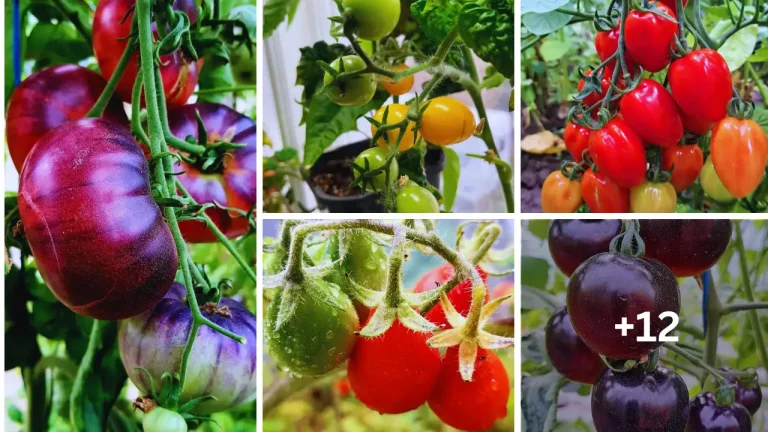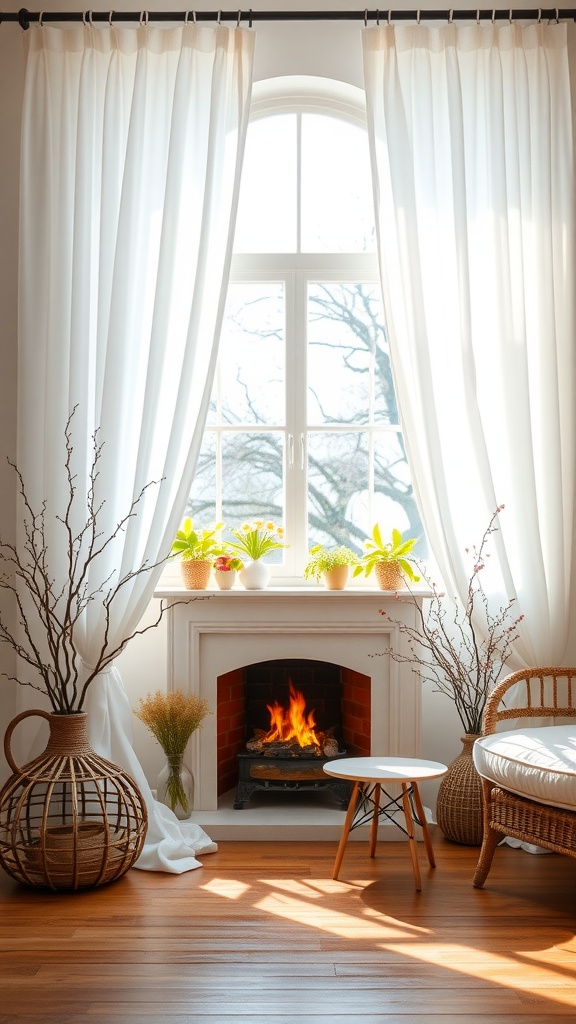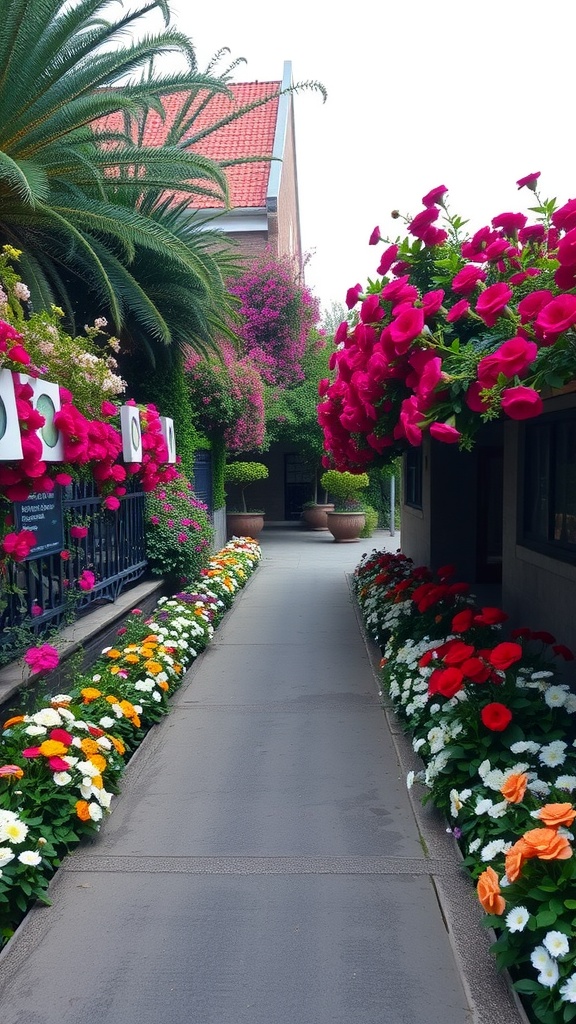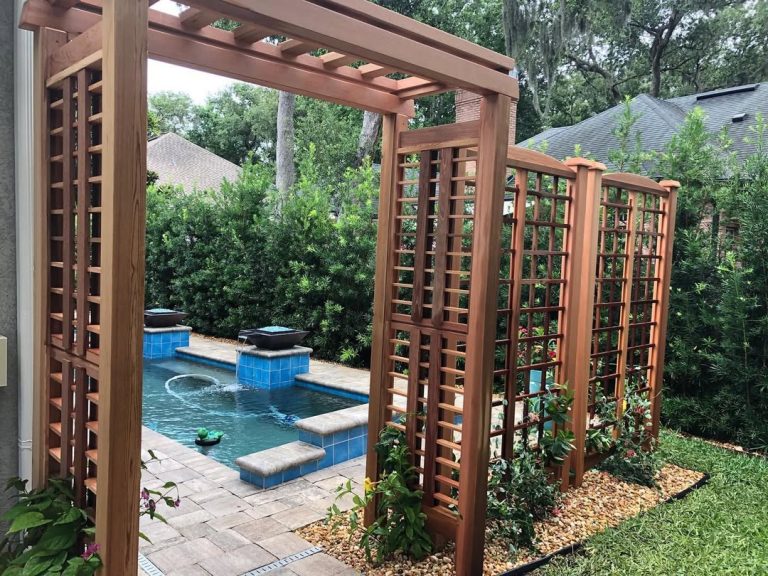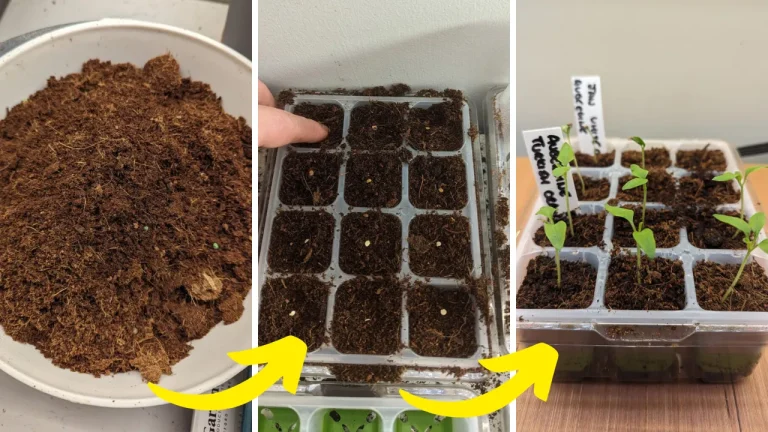19 Mind-Blowing Vegetable Garden Layouts to Conquer Any Space, Revealed!
Gardening is not only a rewarding hobby but also a delightful way to ensure you have fresh, organic vegetables right at your doorstep. Whether you have a sprawling backyard or a modest balcony, there are countless ways to arrange your vegetable garden.
Vegetable Garden Design Basics
Before diving into specific layouts, it’s essential to understand some fundamental principles of vegetable garden design:
- Sunlight: Most vegetables require at least six hours of sunlight daily. When choosing a location for your garden, prioritize spots that receive ample sunlight throughout the day.
- Soil Quality: Ensure your soil is nutrient-rich and well-draining. Consider conducting a soil test to determine its pH level and nutrient content, then amend it as necessary.
- Watering: Vegetables need consistent watering to thrive. Choose a garden location with access to water and consider installing a drip irrigation system for efficient watering.
- Spacing: Proper spacing between plants is crucial for healthy growth. Refer to seed packets or plant tags for spacing recommendations, keeping in mind the mature size of each plant.
Vegetable Garden Layouts
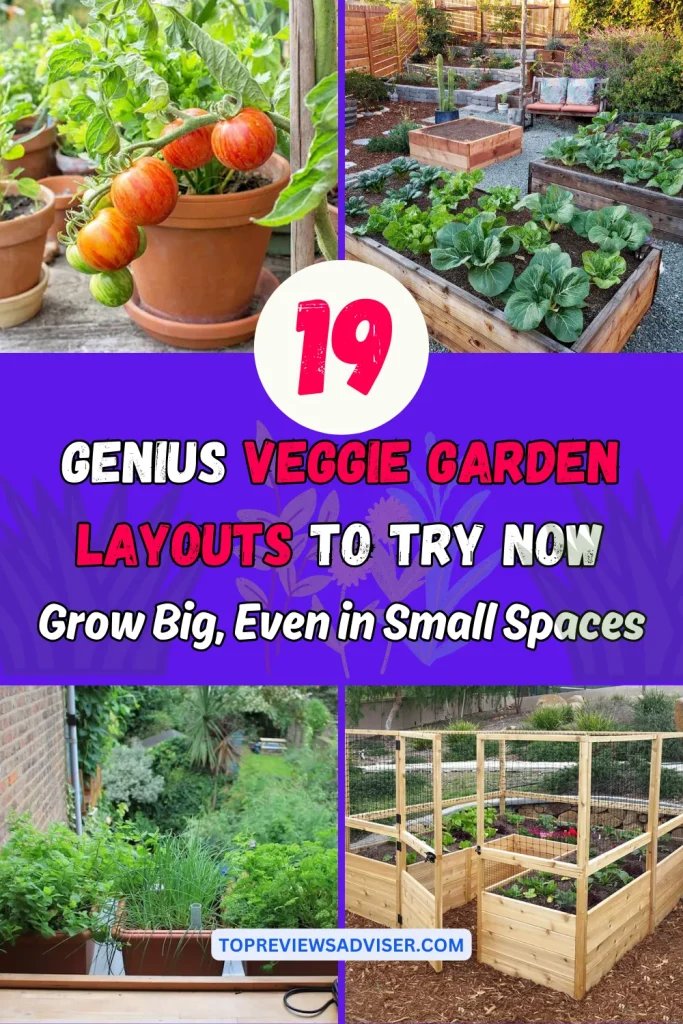
Here are 19 of the best vegetable garden layouts to inspire both novice and seasoned gardeners.
#1. Hang A Pot
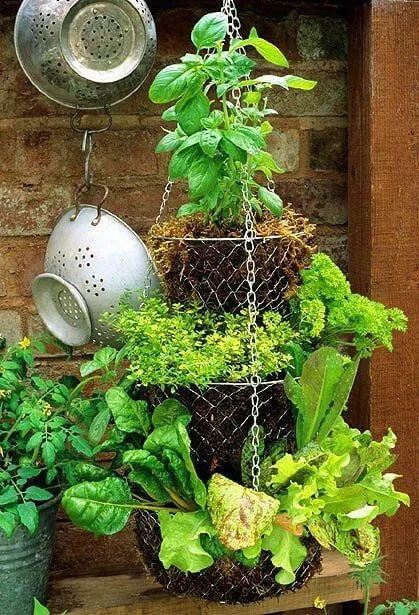
One of the simplest yet effective ways to start gardening is by hanging pots. This method saves space and can add a decorative touch to any area. It’s perfect for herbs and smaller vegetable plants like cherry tomatoes and strawberries.
#2. Pop Up A Shelf
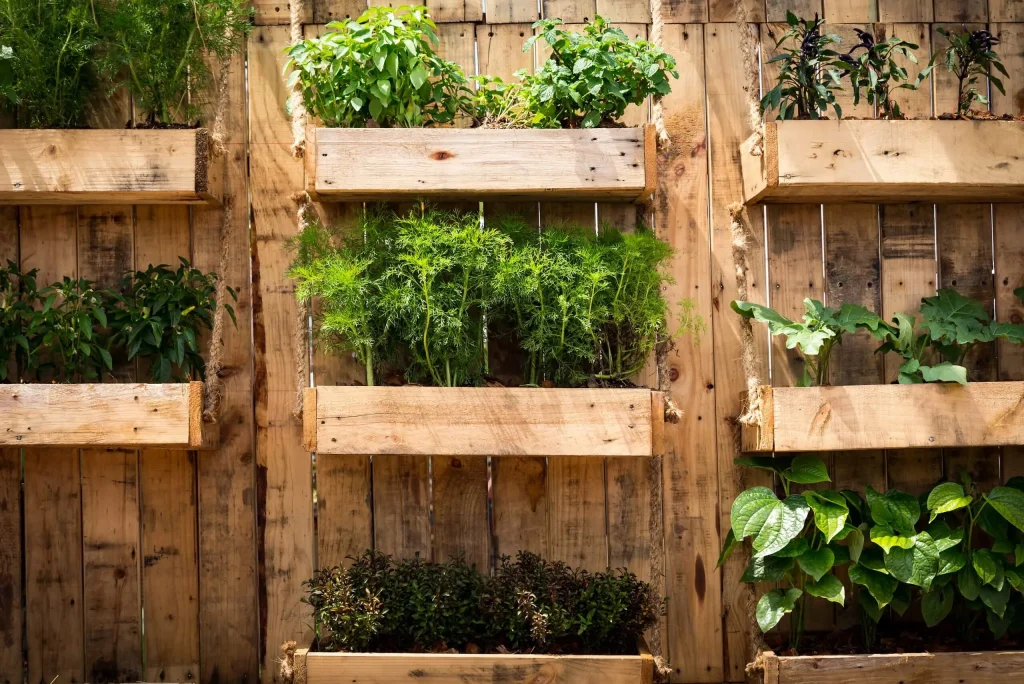
Utilizing vertical space by popping up shelves on walls or balconies can create extra room for your plants. This is ideal for apartments or small spaces. Place your potted plants on these shelves to maximize sunlight exposure.
#3. Interplant With Flowers
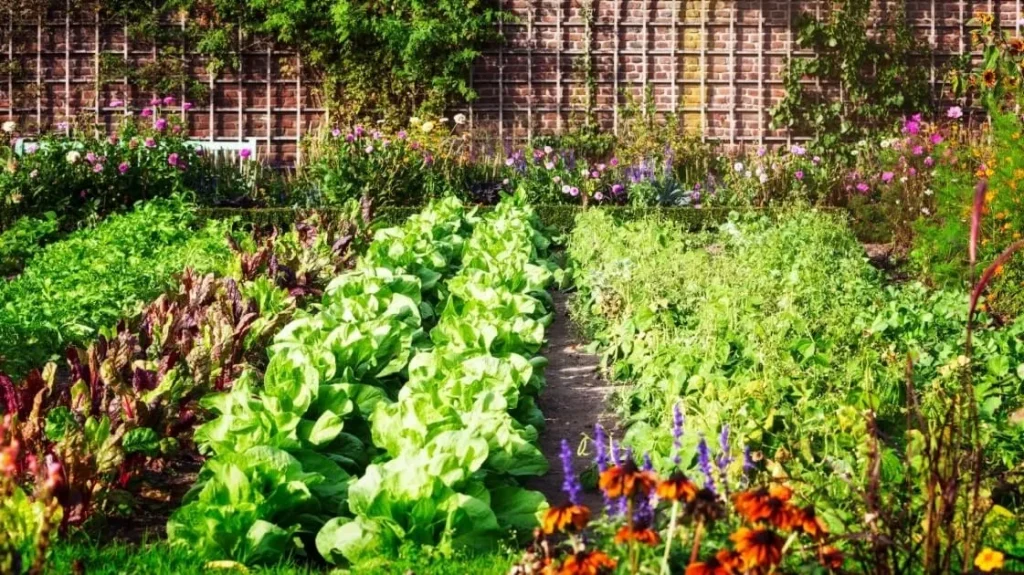
Mixing flowers with vegetables not only maximizes your gardening space but also helps in attracting pollinators and can deter pests. Flowers like marigolds, nasturtiums, and sunflowers are great companions for vegetable plants.
#4. Line Them In Tidy Rows

For a more traditional approach, planting your vegetables in tidy rows can make management and harvesting easier. This layout works best in medium to large gardens, ensuring each plant receives ample sunlight and air circulation.
#5. On A Trellis
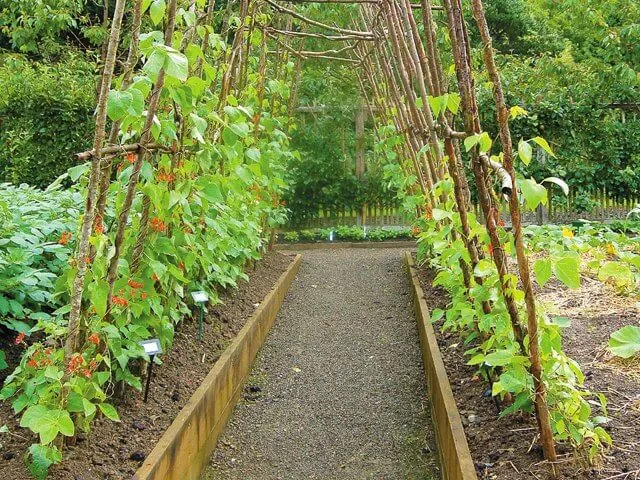
Growing vegetables on a trellis is not only space-efficient but also adds a touch of elegance to your garden. Cucumbers, peas, and pole beans are great choices for trellis planting.
#6. Grow Vegetables In Pots
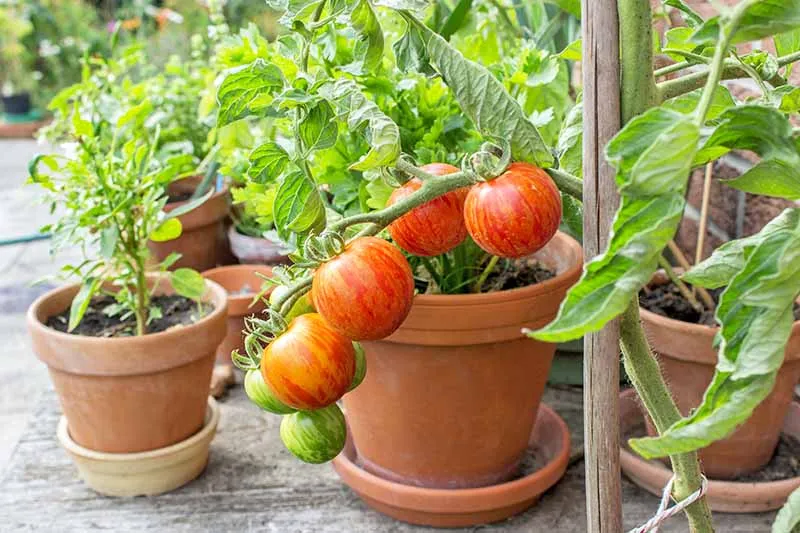
If you lack garden space, pots are your best friend. Almost any vegetable can be grown in pots, including potatoes, carrots, and peppers. Just ensure they have enough depth and width for the roots to spread.
#7. Try Companion Planting
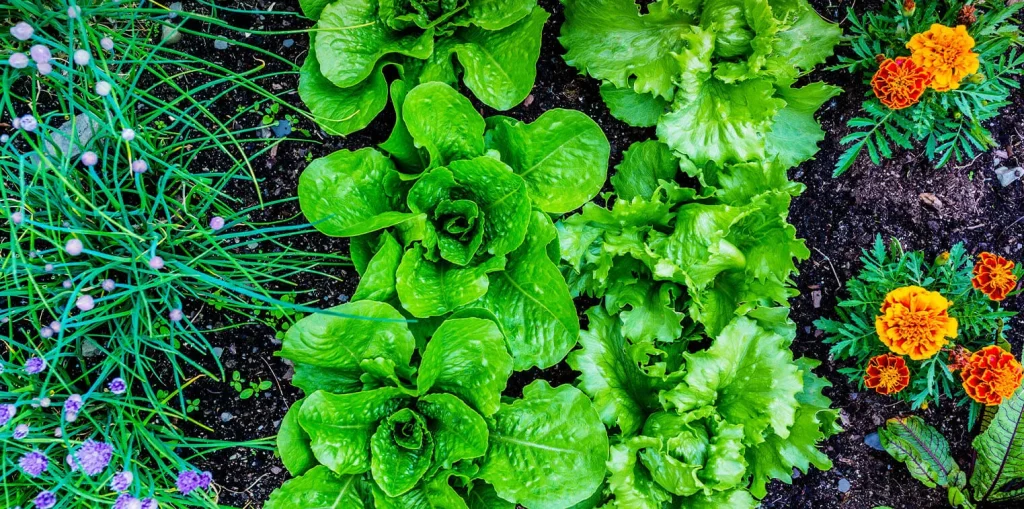
Companion planting involves placing plants together that benefit each other by deterring pests, improving growth, or enhancing flavor. For example, planting basil near tomatoes can help improve their flavor.
#8. Construct Raised Beds
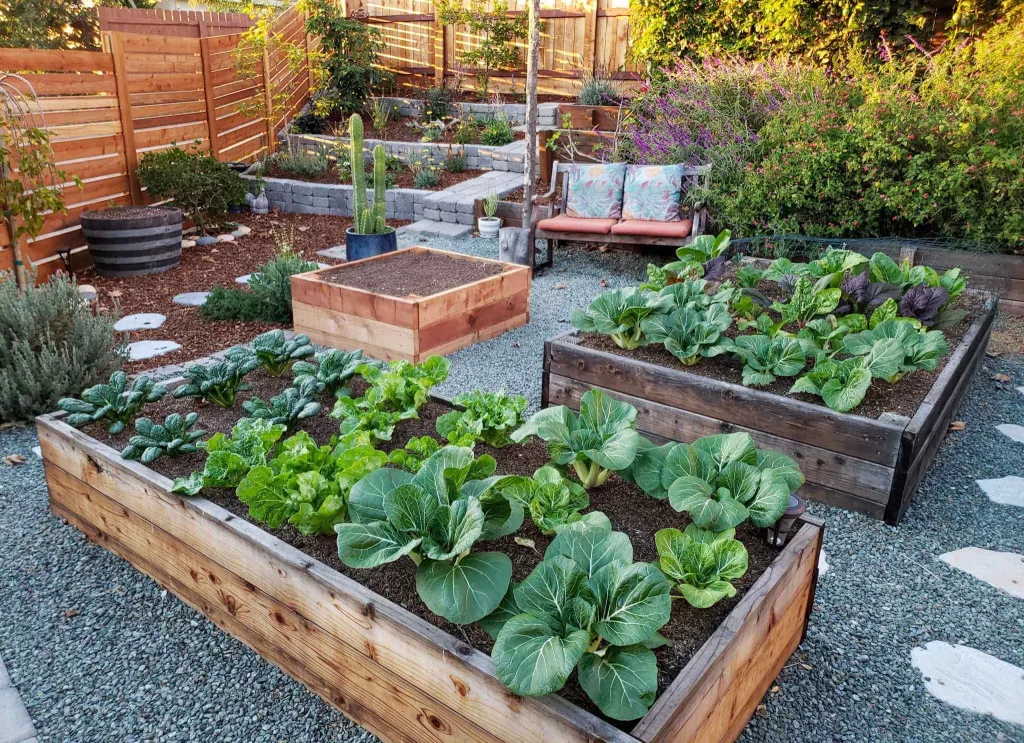
Raised beds offer numerous benefits, including better soil conditions, improved drainage, and easier access for planting and harvesting. They are also a good choice for gardeners with mobility issues.
#9. Create A Vertical Garden
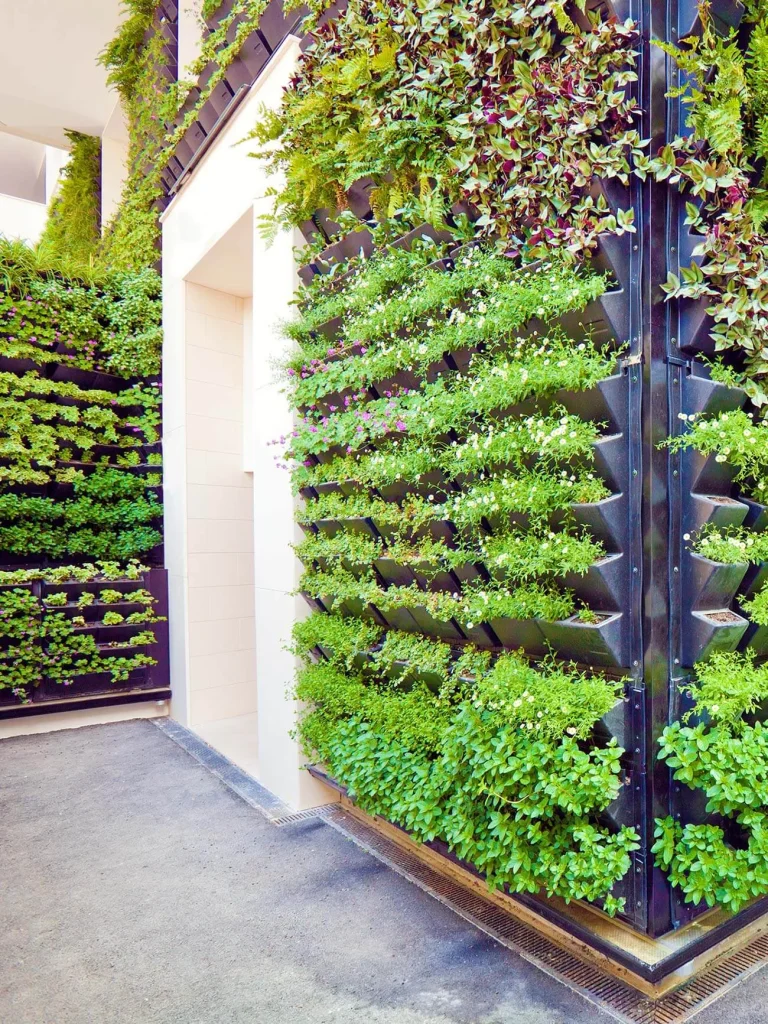
Vertical gardening is an innovative way to grow vegetables when space is limited. Utilize walls, fences, or even create your own structures to support vertical growth.
#10. Set Up A Windowsill Garden
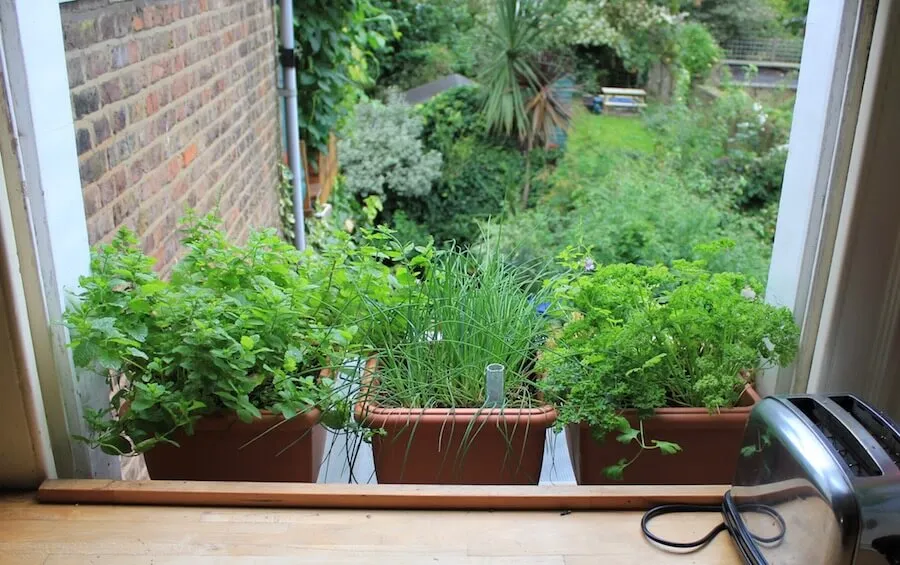
A windowsill garden is perfect for small, indoor spaces. Herbs, greens like spinach and lettuce, and dwarf variety vegetables can thrive in this setting.
#11. Mount A Wall Garden
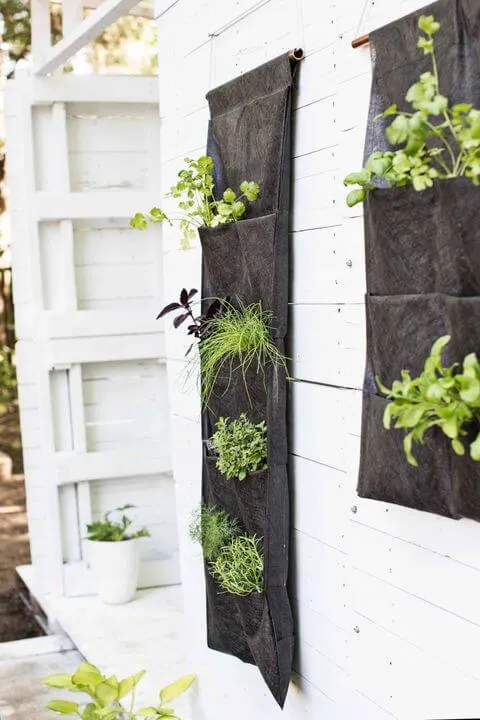
Wall-mounted planters can turn a bland wall into a lush, vertical garden. This is ideal for herbs and leafy greens, and it decorates your space beautifully too.
#12. Fill A Pocket Garden
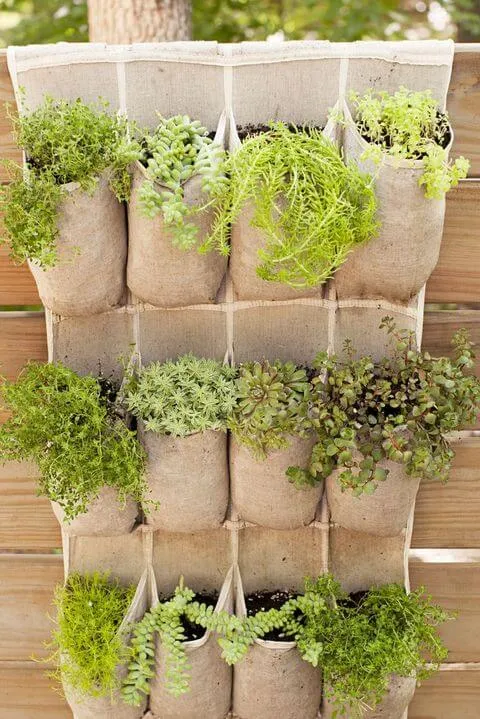
Pocket gardens utilize small, often overlooked spaces in your yard. You can use pocket planters that hang over your railing or fence, perfect for herbs and small vegetables.
#13. Grow In Stock Tanks
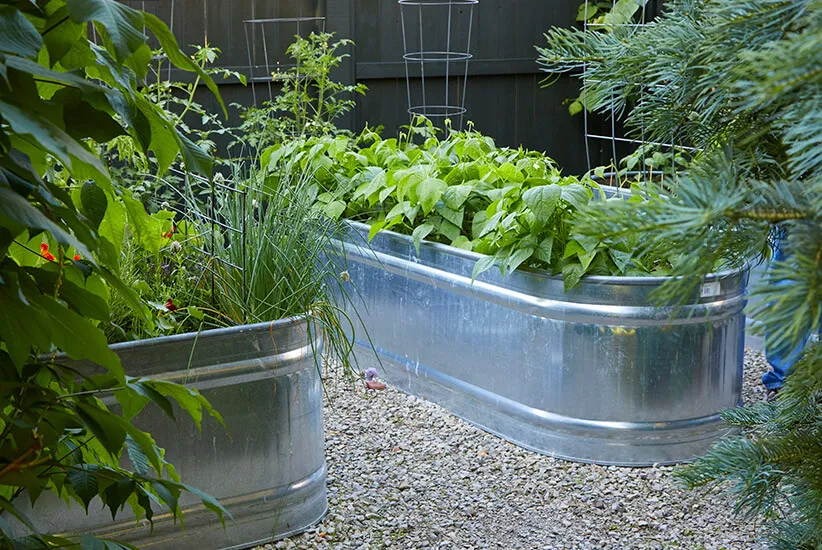
Using stock tanks as planters is an efficient and stylish way to garden. They are durable, provide ample planting space, and can be moved if necessary.
#14. Arrange Shallow Containers
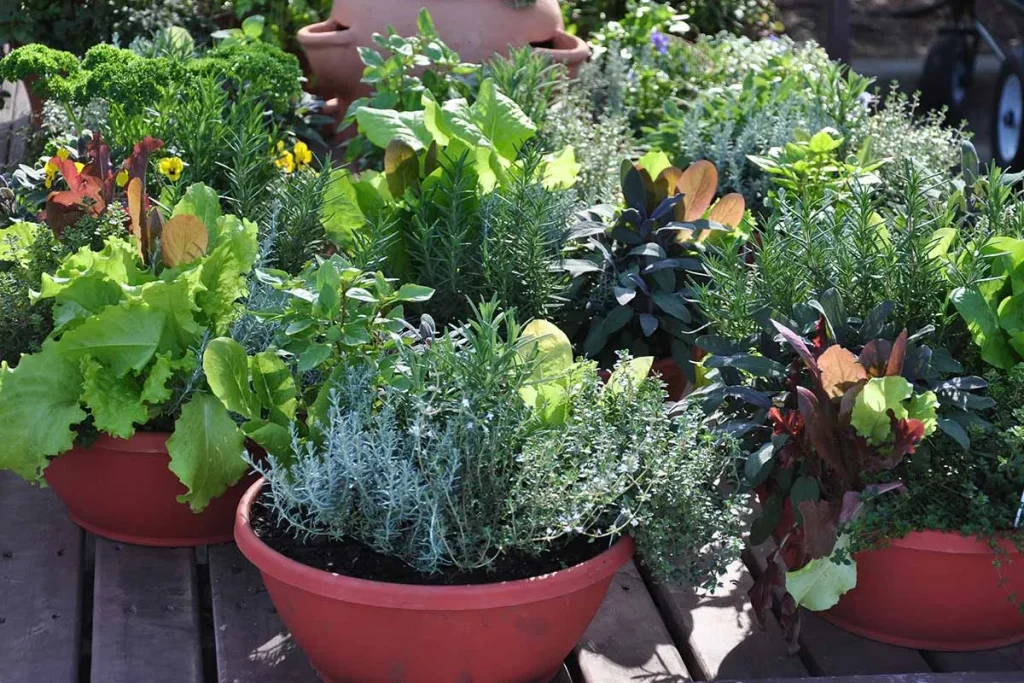
Shallow containers are great for root vegetables and can be placed on patios, decks, or balconies. They’re also easy to manage and make a great choice for beginner gardeners.
#15. Deer Proof Raised Bed
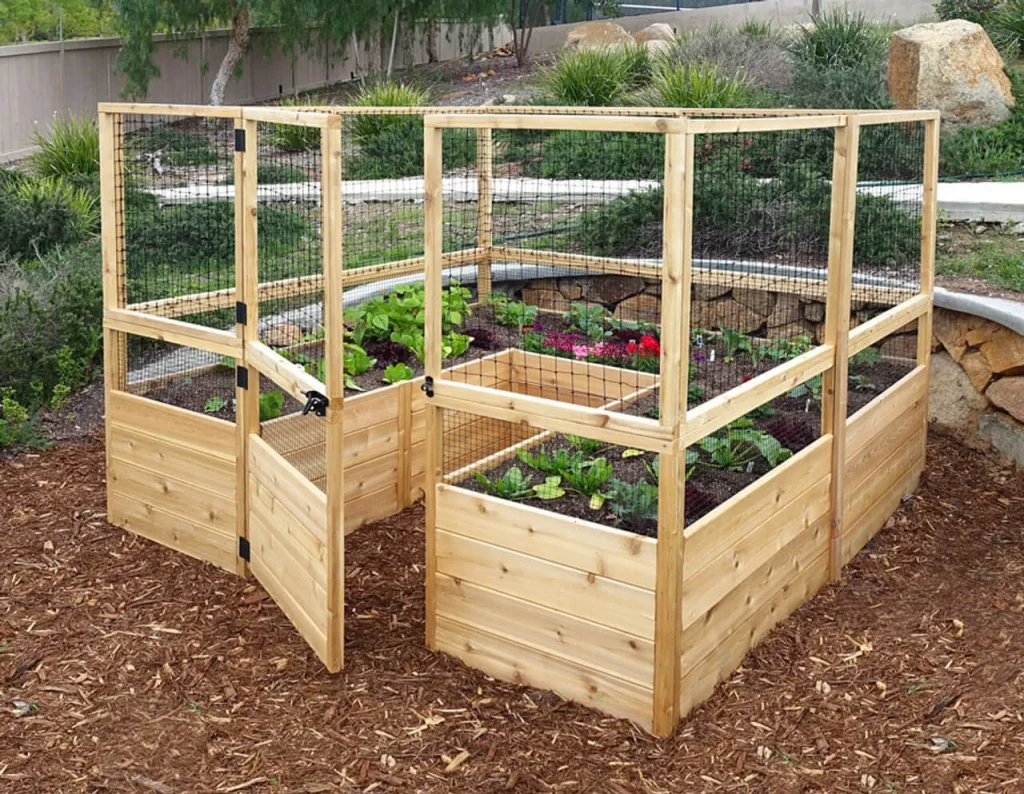
If you’re in an area with wildlife, constructing a deer-proof raised bed can protect your veggies and save you from heartache. Incorporate fences or netting to keep the deer at bay.
#16. Grow In Fabric Bags
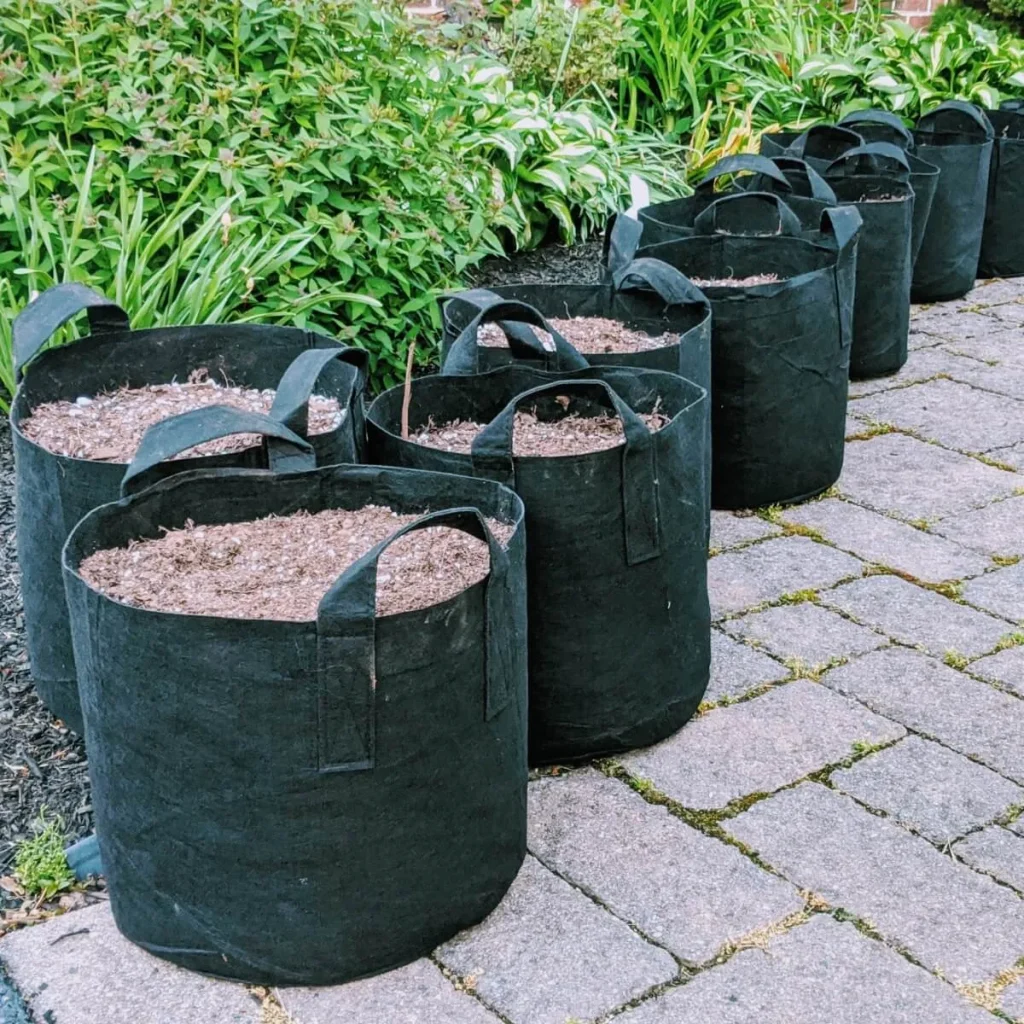
Fabric grow bags are a versatile, affordable, and effective alternative to traditional pots. They are great for root aeration and can be used anywhere in your outdoor space.
#17. Go Hydroponic Planting
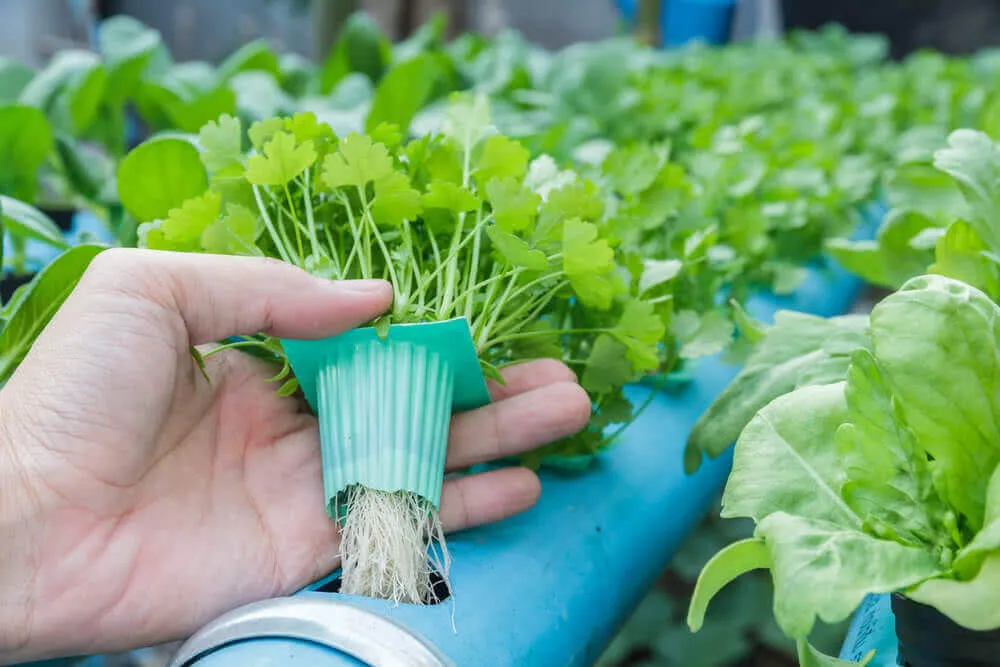
Hydroponic systems allow you to grow vegetables without soil, using mineral nutrient solutions in water. This method is space-efficient and can yield crops faster than soil-based gardens.
#18. Stuffed In Straw Bales
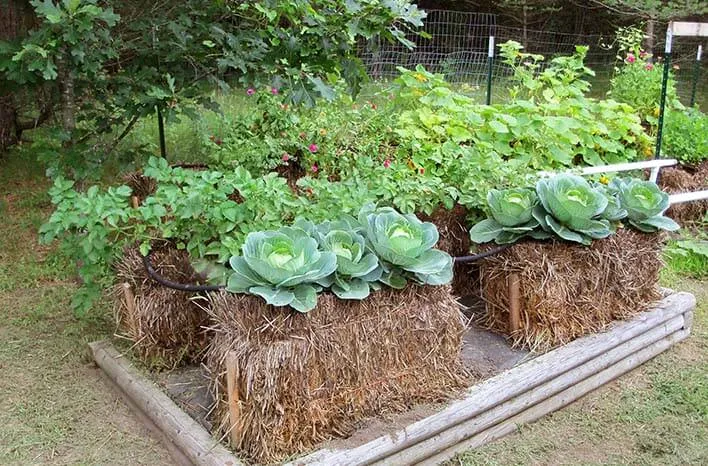
Straw bale gardening is an innovative method where the bales act as both container and growing medium. It’s excellent for growing a variety of vegetables and is particularly easy to set up and maintain.
#19. Cut Your Pipe
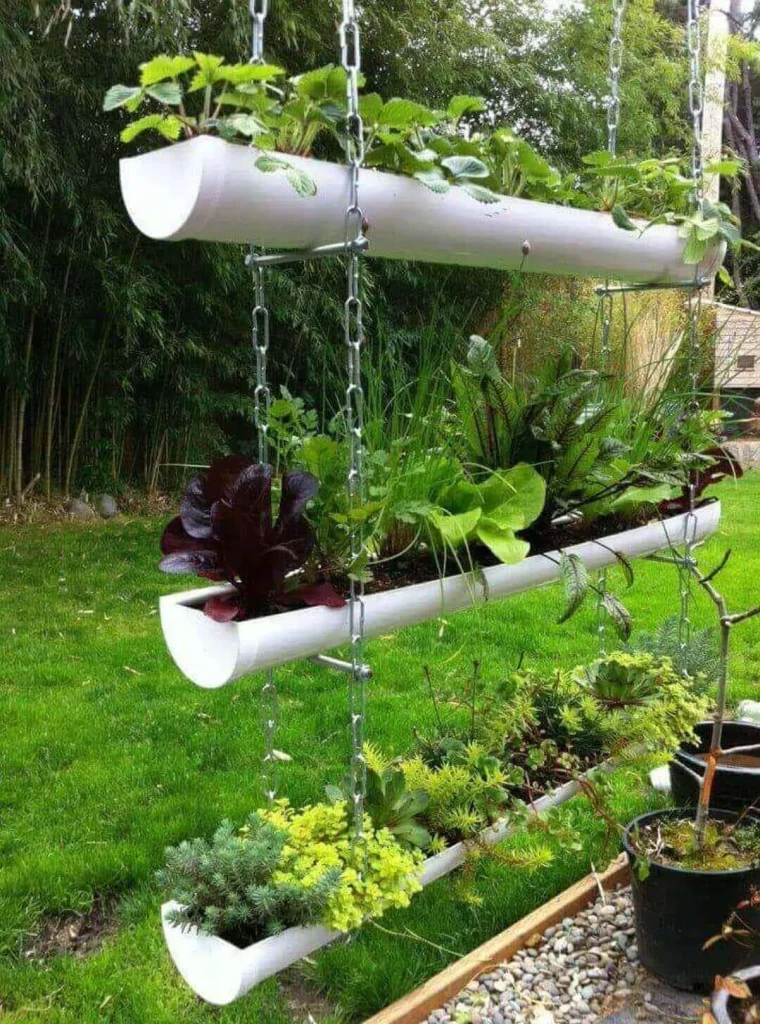
Using sections of large PVC pipes or gutters can be an efficient way to create a compact, hanging garden. This is ideal for small spaces like balconies and can be used to grow herbs and leafy greens.
Choosing Plants for Vegetable Gardens
When selecting plants for your vegetable garden, consider these key points:
- Climate and Conditions: Choose vegetables suited to your region’s climate, soil, and sunlight.
- Space: Opt for plants that fit your garden size and layout, including compact varieties for small spaces.
- Growing Season: Select vegetables that match your growing season length.
- Preferences: Grow what you enjoy eating and experiment with new varieties.
- Companion Planting: Use companion planting to improve plant health and deter pests.
- Succession Planting: Plan for successive plantings to extend your harvest.
- Pest Resistance: Look for varieties resistant to common pests and diseases.
- Pollinator Support: Include pollinator-friendly plants to attract beneficial insects.
By considering these factors, you’ll create a productive and enjoyable vegetable garden tailored to your needs. Happy gardening!
Vegetable Garden Design Tips
To ensure a successful vegetable garden, keep the following tips in mind:
- Start small and gradually expand your garden as you gain experience.
- Practice crop rotation to prevent soil depletion and reduce the risk of disease.
- Incorporate mulch to conserve moisture, suppress weeds, and regulate soil temperature.
- Monitor your garden regularly for pests and diseases, and take prompt action to address any issues.
- Experiment with different layouts, plant combinations, and gardening techniques to find what works best for your space and preferences.
Conclusion
Designing a vegetable garden layout is an exciting opportunity to unleash your creativity while providing fresh, homegrown produce for you and your family. By considering your space, sunlight, soil, and plant selection, you can create a thriving garden, no matter how big or small your green space may be. Happy gardening!

